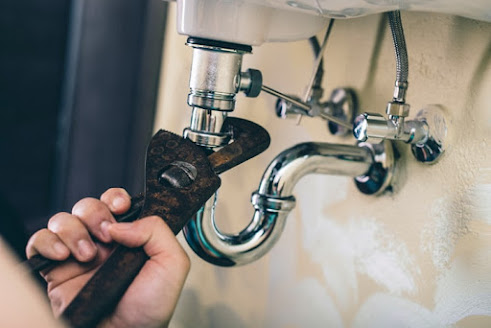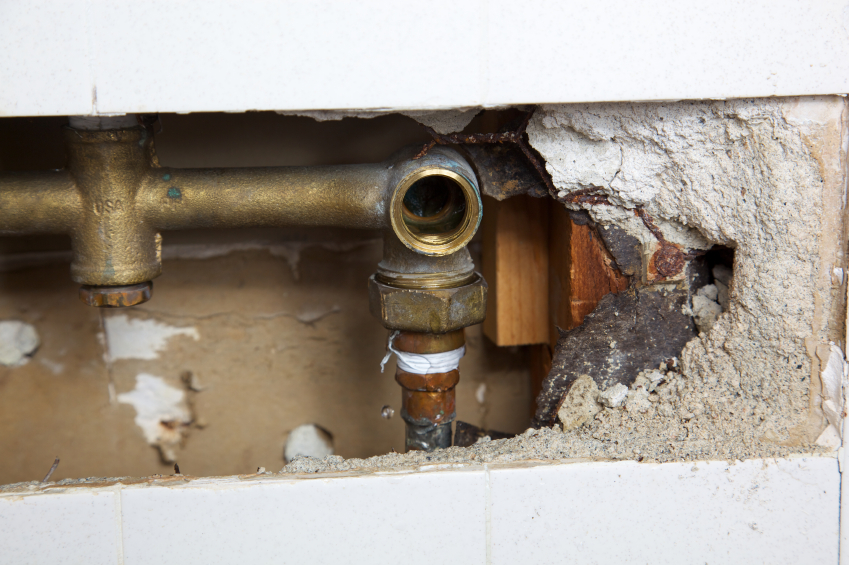The content down below involving Why Do My Plumbing Pipes Make A Knocking Noise is particularly enjoyable. Read on and draw your own personal conclusions.

To identify loud plumbing, it is very important to determine initial whether the unwanted audios happen on the system's inlet side-in other words, when water is transformed on-or on the drain side. Sounds on the inlet side have actually varied reasons: extreme water stress, used valve and also faucet components, improperly linked pumps or other devices, incorrectly put pipeline fasteners, and also plumbing runs consisting of way too many tight bends or various other limitations. Sounds on the drain side generally come from inadequate area or, as with some inlet side sound, a format including limited bends.
Hissing
Hissing sound that takes place when a faucet is opened somewhat normally signals excessive water pressure. Consult your local public utility if you suspect this issue; it will have the ability to inform you the water pressure in your location and can mount a pressurereducing valve on the incoming water pipe if needed.
Thudding
Thudding sound, typically accompanied by trembling pipelines, when a tap or appliance valve is switched off is a condition called water hammer. The sound as well as resonance are caused by the reverberating wave of stress in the water, which suddenly has no location to go. Occasionally opening a valve that discharges water rapidly right into an area of piping containing a limitation, joint, or tee fitting can generate the same condition.
Water hammer can normally be treated by mounting fittings called air chambers or shock absorbers in the plumbing to which the problem valves or taps are attached. These devices enable the shock wave produced by the halted circulation of water to dissipate in the air they include, which (unlike water) is compressible.
Older plumbing systems might have brief upright areas of capped pipe behind walls on faucet competes the very same purpose; these can at some point loaded with water, reducing or destroying their effectiveness. The cure is to drain the water supply entirely by shutting down the major water supply valve as well as opening up all taps. After that open up the major supply valve and also shut the taps one at a time, starting with the faucet nearest the valve and also finishing with the one farthest away.
Babbling or Shrilling
Intense chattering or screeching that occurs when a valve or faucet is activated, which generally goes away when the installation is opened totally, signals loosened or malfunctioning internal parts. The solution is to change the shutoff or tap with a brand-new one.
Pumps and also devices such as washing devices as well as dishwashing machines can transfer motor noise to pipes if they are improperly connected. Connect such products to plumbing with plastic or rubber hoses-never stiff pipe-to isolate them.
Other Inlet Side Noises
Creaking, squeaking, scratching, snapping, and tapping usually are brought on by the development or contraction of pipes, generally copper ones providing hot water. The sounds occur as the pipes slide versus loosened bolts or strike close-by house framing. You can often determine the area of the issue if the pipes are exposed; just adhere to the sound when the pipes are making sounds. More than likely you will uncover a loosened pipeline wall mount or an area where pipes exist so near to floor joists or other mounting items that they clatter against them. Attaching foam pipeline insulation around the pipelines at the point of get in touch with should treat the problem. Be sure bands as well as hangers are safe and secure and provide ample assistance. Where possible, pipeline bolts ought to be affixed to large structural components such as structure walls as opposed to to framing; doing so lessens the transmission of resonances from plumbing to surface areas that can magnify and move them. If connecting fasteners to framework is unavoidable, cover pipelines with insulation or various other resilient product where they call fasteners, and also sandwich the ends of brand-new fasteners in between rubber washers when installing them.
Remedying plumbing runs that struggle with flow-restricting tight or numerous bends is a last hope that needs to be carried out just after seeking advice from a knowledgeable plumbing professional. Regrettably, this situation is relatively common in older homes that might not have been developed with indoor plumbing or that have seen numerous remodels, particularly by beginners.
Drainpipe Sound
On the drain side of plumbing, the chief objectives are to eliminate surfaces that can be struck by dropping or rushing water as well as to shield pipes to consist of unavoidable noises.
In brand-new construction, tubs, shower stalls, toilets, as well as wallmounted sinks and containers need to be set on or against durable underlayments to reduce the transmission of noise via them. Water-saving toilets as well as faucets are much less loud than conventional designs; mount them instead of older types even if codes in your location still allow using older fixtures.
Drains that do not run up and down to the basement or that branch into straight pipeline runs supported at flooring joists or various other framing present especially frustrating noise problems. Such pipelines are big enough to emit substantial vibration; they also bring substantial quantities of water, which makes the situation worse. In brand-new building and construction, define cast-iron soil pipes (the big pipes that drain commodes) if you can afford them. Their massiveness includes much of the sound made by water travelling through them. Additionally, stay clear of transmitting drainpipes in walls shown rooms and also areas where individuals gather. Walls containing drainpipes ought to be soundproofed as was defined earlier, using double panels of sound-insulating fiberboard and wallboard. Pipes themselves can be wrapped with special fiberglass insulation made for the function; such pipelines have a resistant plastic skin (sometimes containing lead). Results are not always satisfactory.
WHY IS MY PLUMBING MAKING SO MUCH NOISE?
This noise indeed sounds like someone is banging a hammer against your pipes! It happens when a faucet is opened, allowed to run for a bit, then quickly shut — causing the rushing water to slam against the shut-off valve.
To remedy this, you’ll need to check and refill your air chamber. Air chambers are filled with — you guessed it — air and help absorb the shock of moving water (that comes to a sudden stop). Over time, these chambers can fill with water, making them less effective.
You’ll want to turn off your home’s water supply, then open ALL faucets (from the bathroom sink to outdoor hose bib) to drain your pipes. Then, turn the water back on and hopefully the noise stops! If you’re still hearing the sound, give us a call to examine further.
Whistles
Whistling sounds can be frustrating, as sometimes the source isn’t easily identified. However, if you can pinpoint which faucet or valve that may be the cause, you’ll likely encounter a worn gasket or washer — an easy fix if you replace the worn parts!Whistling sounds from elsewhere can mean a number of things — from high water pressure to mineral deposits. Your best plan of attack here is to give our plumbing experts a call. We’ll be able to determine where the noise is coming from and what the cause may be, then recommend an effective fix!
Cracks or Ticks
Cracking or ticking typically comes from hot water going through cold, copper pipes. This causes the copper to expand resulting in a cracking or ticking sound. Once the pipes stop expanding, the noise should stop as well.
Pro tip: you may want to lower the temperature of your water heater to see if that helps lessen the sound, or wrapping the pipe in insulation can also help muffle the noise.
Bangs
Bangs typically come from water pressure that’s too high. To test for high water pressure, get a pressure gauge and attach it to your faucet. Water pressure should be no higher than 80 psi (pounds per square inch) and also no lower than 40 psi. If you find a number greater than 80 psi, then you’ve found your problem!
Next step is to give us a call in order to install a pressure regulator. Trust us, you don’t want to wait to resolve this issue. Not only is the sound annoying, but high water pressure can be destructive to your home — including damaging certain appliances, like your washer and dishwasher.
Dripping
You might be accustom to the slow quiet drip your kitchen faucet makes. You might have even tuned out your bathroom sink dripping and drabbing all day long — but it’s time to find its cause.
A slow drip could signify a variety of easy to fix issues, such as a worn out O ring, or loose part. And by ignoring the drip, you could be wasting up to 2,000 gallons of water a year! So start conserving water — get it looked at ASAP.
https://www.pwessig.com/blog/2018/december/why-is-my-plumbing-making-so-much-noise-/

We were introduced to that editorial on Why Your Water Pipes Are Noisy and How To Shut Them Up from someone on another domain. Do you know anybody else who is sincerely interested in the topic? Take a moment to promote it. We cherish reading our article about Why is My Home Making Strange Plumbing Noises.
Maintenance Sign-Up